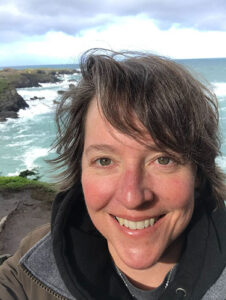Play by Joy Westermeyer
It’s simple. Everyone knows what the definition of play is, and everyone seems to know that children and young animals do it, but why is it such a dirty word in the world of academia when parents think of schooling for their children? Why do many in society still lean on an archaic way of learning, sitting at a desk and performing rote exercises?
As the importance of early childhood learning becomes more and more apparent, many companies see this as an opportunity to…well, make money, but let’s not get into that. Let’s talk about why play is important.
Play is the “job” of all children. Children learn through play, they are able to work out situations through social dramatic play where they try out different scenarios, what it’s like to be a parent, a vet, run a restaurant, or work as a police officer or firefighter. They work on interacting with others, and in doing so, find empathy for others. They work out situations that may have caused them stress.
I still remember how one year in my classroom of 3 to 5 years olds, the children kept playing, over and over, severe weather scenarios in the dramatic play area. We had previously conducted a severe weather drill where the class had to shelter in a bathroom and essentially duck and cover.
Sure, we talked about how this drill was going to look. We debriefed that drill with them, but for children to truly grasp what we had gone through, they had to play it out. Once they had worked it out on their own timeline, giving the children the power and time to explore a concept, they then moved on to another topic of interest and came away with a sort of empowerment; taking on the fear and working it out through play.
Play helps children develop concepts to engage with others. Isn’t this the ultimate goal in life, the ability to interact with our peers and make connections? So, what happens when adults run children’s play by putting time limits on play, giving them, say 15 minutes, and then children have to go to another “station”? You may think that helps them explore different things, but what this does is steal the opportunity for children to work out situational problems.
Putting time limits on areas in the classroom just creates a surface dive into something, when research shows that to be fully engaged you need at least 30 minutes or longer. Think about a time when learning for you was rich and meaningful. Was it from a lecture? Was it from a worksheet? Was it under a specific time limit? I’m thinking not; it was probably a time where you collaborated with others and perhaps played with an idea to see various outcomes.
Play constitutes high-level thinking, cognitive skills that you don’t get from sitting at a desk working on a worksheet or listening to a lecture. Play is not only dealing with cognitive skills but social/emotional learning along with physical development. Giving children the opportunity to play with open-ended materials and access to various mediums can enrich literacy skills and the passion to be a lifelong learner.
There is much research in the field to support play for children, but I find as an educator we are constantly having to prove and fight for the rights of children to play. As a society, we must look deeply at why that is? What is the race for our children to grow up so quickly? Why do we want to thrust them into the adult world, while they still have work to do as children? That work being “play”. ❦
 About the Author
About the Author
Joy Westermeyer has a B.A. in History from the University of Texas at Austin and a M.A.T. in Early Childhood Education from Webster University in St. Louis, Missouri. She has been an Early Childhood educator for over ten years and has presented at The National Association for the Education of Young Children and The California Association for the Education of Young Children. She has also been a guest lecturer at St. Louis University and Northwest Missouri State.
She is the mother of two amazing daughters and is currently residing in the Pacific Northwest where she enjoys hiking and spending time with her husband of 28 years.
